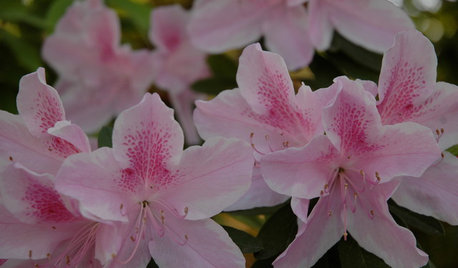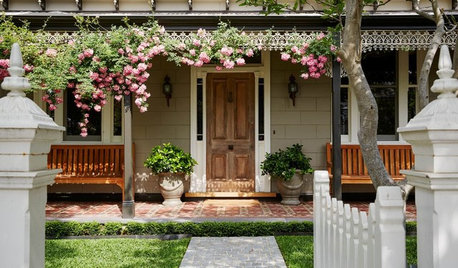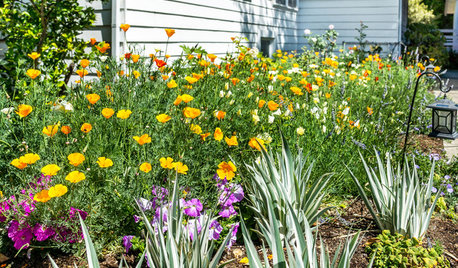Best mulch for salvias
cottageflowers
15 years ago
Related Stories

GARDENING GUIDESGarden Myths to Debunk as You Dig This Fall and Rest Over Winter
Termites hate wood mulch, don’t amend soil for trees, avoid gravel in planters — and more nuggets of garden wisdom
Full Story
GARDENING GUIDESTexas Gardener's November Checklist
Planting and protecting are top priorities in the garden this month, so master the mulch and get those trees and shrubs in the ground
Full Story0

GARDENING FOR BUTTERFLIESButterfly Gardening: Delight the Eyes With Living Sculptures
Surprise and thrill with a garden that attracts magical winged creatures, bringing color, movement and life
Full Story
FRONT YARD IDEASBefore and After: Front Lawn to Prairie Garden
How they did it: Homeowners create a plan, stick to it and keep the neighbors (and wildlife) in mind
Full Story
SAVING WATERHouzz Call: Are You Letting Go of Your Lawn?
Many facing a drought are swapping turf for less thirsty plantings. If you’re one of them, we’d like to hear about it
Full Story
SAVING WATERXeriscape Gardens: How to Get a Beautiful Landscape With Less Water
Conserve water and make gardening much easier with the xeriscape approach’s 7 principles
Full Story
GARDENING GUIDESAttract Hummingbirds and Bees With These Beautiful Summer Flowers
Roll out a welcome mat for pollinators to keep your landscape in balance and thriving
Full Story
LANDSCAPE DESIGNFront-Yard Makeover Ideas With Mojo
Make a statement in your front landscape with one of these standout styles
Full Story
EARTH DAY5 Ideas for a More Earth-Friendly Garden
Consider increasing the size of garden beds, filtering rainwater and using plants to reduce energy use
Full Story
LANDSCAPE DESIGN10 Ideas for a Creative, Water-Conscious Yard
Check out these tips for a great-looking outdoor area that needs less water
Full StoryMore Discussions






CA Kate z9
ladyslppr
Related Professionals
Maple Valley Landscape Architects & Landscape Designers · Norfolk Landscape Architects & Landscape Designers · Garden City Landscape Architects & Landscape Designers · Arden-Arcade Landscape Contractors · Damascus Landscape Contractors · Eagle Landscape Contractors · Fishers Landscape Contractors · Longview Landscape Contractors · Miller Place Landscape Contractors · New Cassel Landscape Contractors · Destin Siding & Exteriors · Round Rock Siding & Exteriors · San Jacinto Siding & Exteriors · South Windsor Siding & Exteriors · Woodland Hills Siding & Exteriorswardda
rich_dufresne
wardda